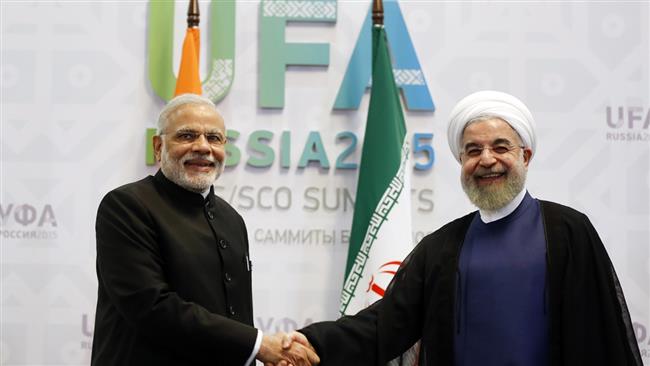by Sumitha Narayanan Kutty
Indian prime minister Narendra Modi made his first-ever visit to Iran on Sunday. It was also the first visit by an Indian head of state since the Iranian nuclear deal last year. Topping Modi’s agenda were two key agreements—the trilateral transit pact between India, Iran and Afghanistan and the bilateral contract between India and Iran on the first phase of development of the Chabahar port.
With these crucial transit deals in the bag, India will cement its role in Iran’s infrastructure development.
The trilateral transit agreement, over a decade in the making, will allow Indian goods to reach Afghanistan through Iran. The route will link ports on India’s western coast to the port city of Chabahar in southeast Iran. It will also establish rail links north to the Iranian border city of Zahedan and, subsequently, into Afghanistan.
Negotiators from India, Iran, and Afghanistan finalized the text of the agreement in New Delhi last month, though the exact routes are still being chalked out. India will also hammer out a separate deal with Iran to supply steel rails to build that railway line connecting Chabahar to Zahedan.
The Indian prime minister’s agenda for his two-day visit is bittersweet. On the one hand, several strategic projects between India and Iran (particularly infrastructure-related) are on track – either completed or well into the last stages of negotiations. On the other, New Delhi found itself hitting a “payment wall’” (now partially sorted out) as it attempted to clear its $6.5 billion oil debt to Iran through European banks.
Iranian Frustration with US
India’s payment struggle underscores the problems currently plaguing the Iranian investment climate some six months after sanctions were lifted—European bankers remain reluctant to do business with Iran given the uncertainty over restrictive American laws.
In this setting, during separate meetings with Iranian President Hassan Rouhani and, more significantly, the Supreme Leader Ayatollah Ali Khamenei, the Indian leader will discover considerable frustration with the United States, one of India’s important strategic partners. In recent comments, the Supreme Leader seems yet again in no mood to tolerate the “Great Satan” (a term he used this week after a gap of eight months) and its efforts to “scare foreign investors from going to Iran.”
And here’s where India’s dealings stand in stark contrast. The two countries signed a memorandum of understanding (MoU) on the development of Iran’s Chabahar port in May last year even before the nuclear deal was sealed. The agreement, now finalized, will allow India to develop and operate two berths on a ten-year lease at the Shahid Beheshti Port in Chabahar. The Indian government has already approved a $150-million credit line.
Indian companies will also invest an additional $20 billion in the city’s free trade zone. Last year also saw frequent visits by both Indian and Iranian ministers to both Tehran and New Delhi to follow up on various projects and expedite discussions when needed.
Of course, this period has not been without bumps. In the months right after the July nuclear deal, Iranian officials drove harder bargains with the Indians. The great expectation of European investments into Iran’s prime sectors, like oil and gas and infrastructure, drove them to strike while the iron was hot.
Tehran successfully pushed Indian companies to renegotiate lower prices on contracts to export steel rail tracks. It withdrew its long-standing offer to an Indian consortium to develop the Farzad B gas field—the companies had already begun exploration—and, after months of back-and-forth discussion, agreed to follow through in April. The development, financial and commercial terms are now expected to be sealed by October.
Chabahar Port
A final contentious negotiation took place over the development of the Chabahar port. The main disagreement, according to Indian officials, was that the Iranians failed to disclose, when the MoU was signed last year, that they had leased out the port to an Iranian company Arya Bandar. After three rounds of negotiations and three extended deadlines, the sticking points are resolved and a win-win agreement reached.
The development of the Chabahar port will be India’s most prized infrastructure investment in Iran. India’s planned investment in Chabahar has in turn piqued the interest of some of its closer strategic partners. Japan has recently expressed interest in teaming up with India in Chabahar, and the Japanese prime minister is likely to visit Iran in August to follow up.
Modi’s maiden visit to Iran signals new energy in bilateral ties. It reinforces his government’s decision to prioritize infrastructure development in Iran alongside energy.
On his part, Iranian president Hassan Rouhani must hope that India’s commitment to invest in Chabahar, followed by a high-profile photo-op with the leaders of India and Afghanistan, will send out the right signal to investors– that despite setbacks, Tehran is very much in business and successfully engaging its regional partners.





